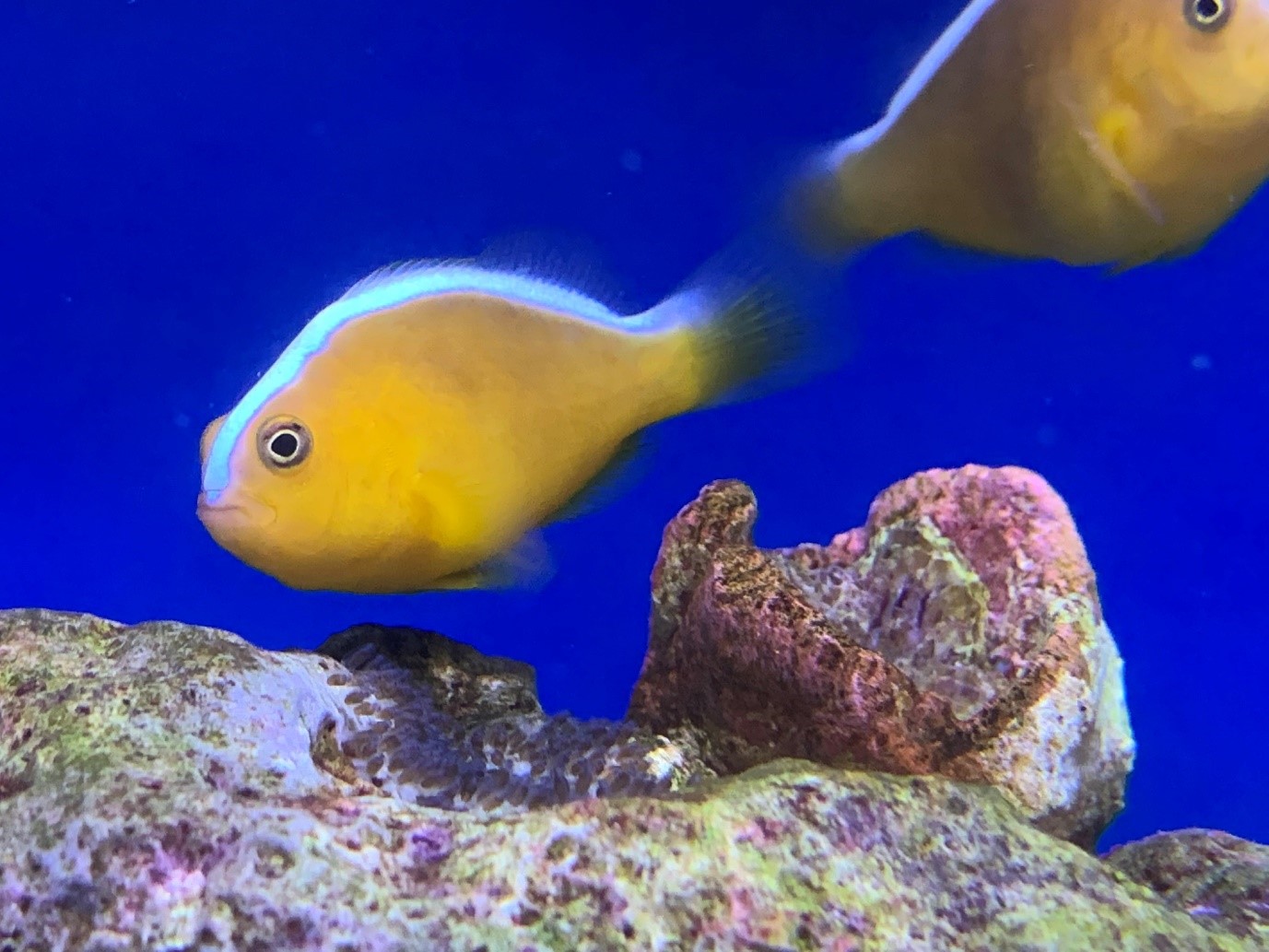What's in store - April 2022
Caught in a rare moment of swimming the right way up, this Giant upside-down catfish (Synodontis batensoda) was one of a number of unusual species seen at our York store. Although capable of reaching 20cm or more, these plankton feeding cats are peaceful and harmless to fishes that they can’t swallow whole. A large aquarium will be needed, as they like to live in groups.
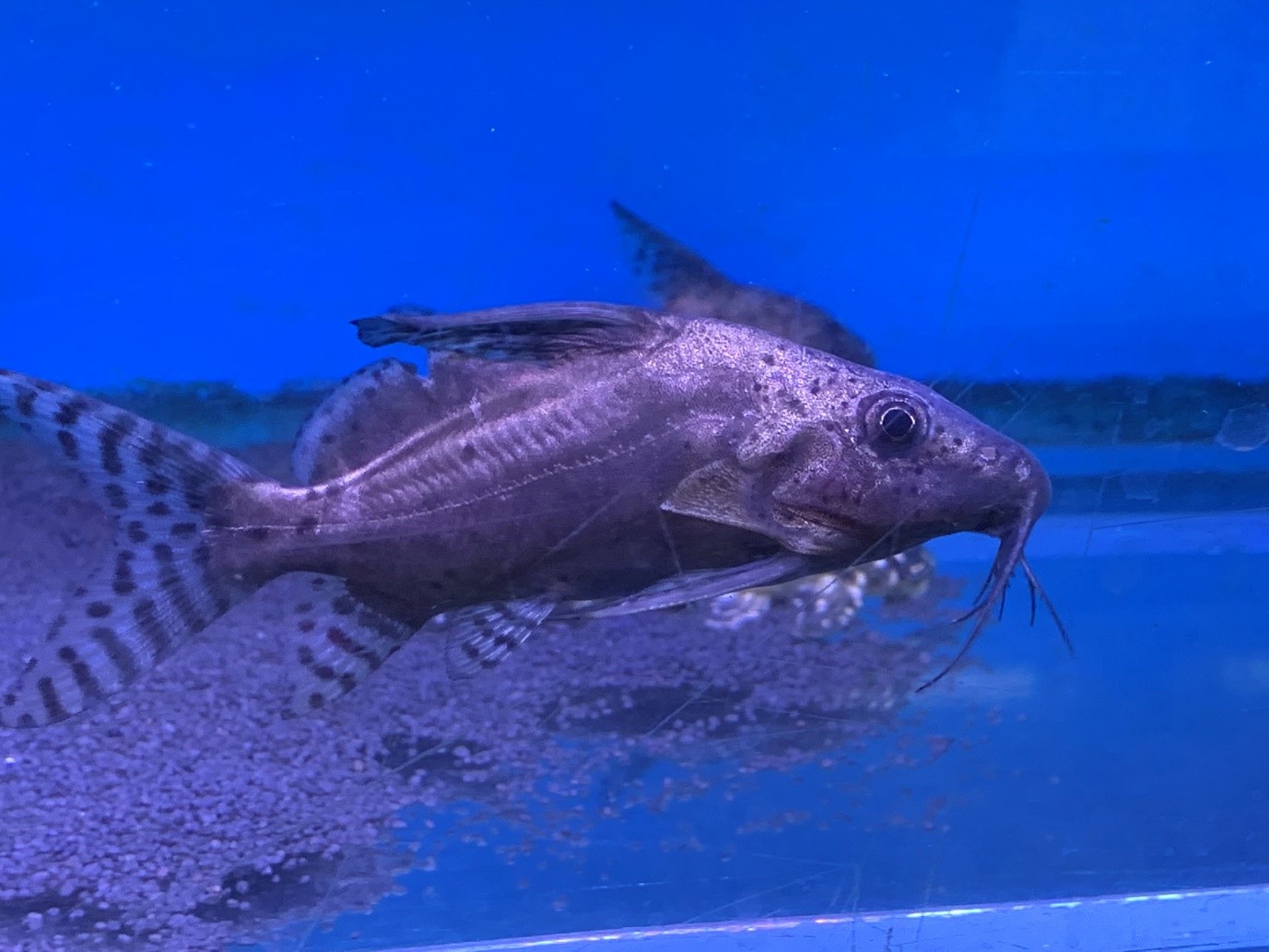
Some fishes are so familiar that it’s easy to forget how remarkable they are. A visit to our Cwmbran store delivered some of the largest Green chromis (Chromis viridis) I’ve seen for sale anywhere and it served as a good reminder that these are one of the best choices available for the reef aquarium. They’re peaceful, especially for a damselfish, they change sex so you always get a nice peaceful group, they give shy fishes confidence by shoaling in open water, they do well on dry food and they’re never expensive! For the most stable shoal, it’s a good idea to mix large specimens with a group of smaller ones.
https://www.fishkeeper.co.uk/help-and-advice/marine/damselfish/green-chromis-/
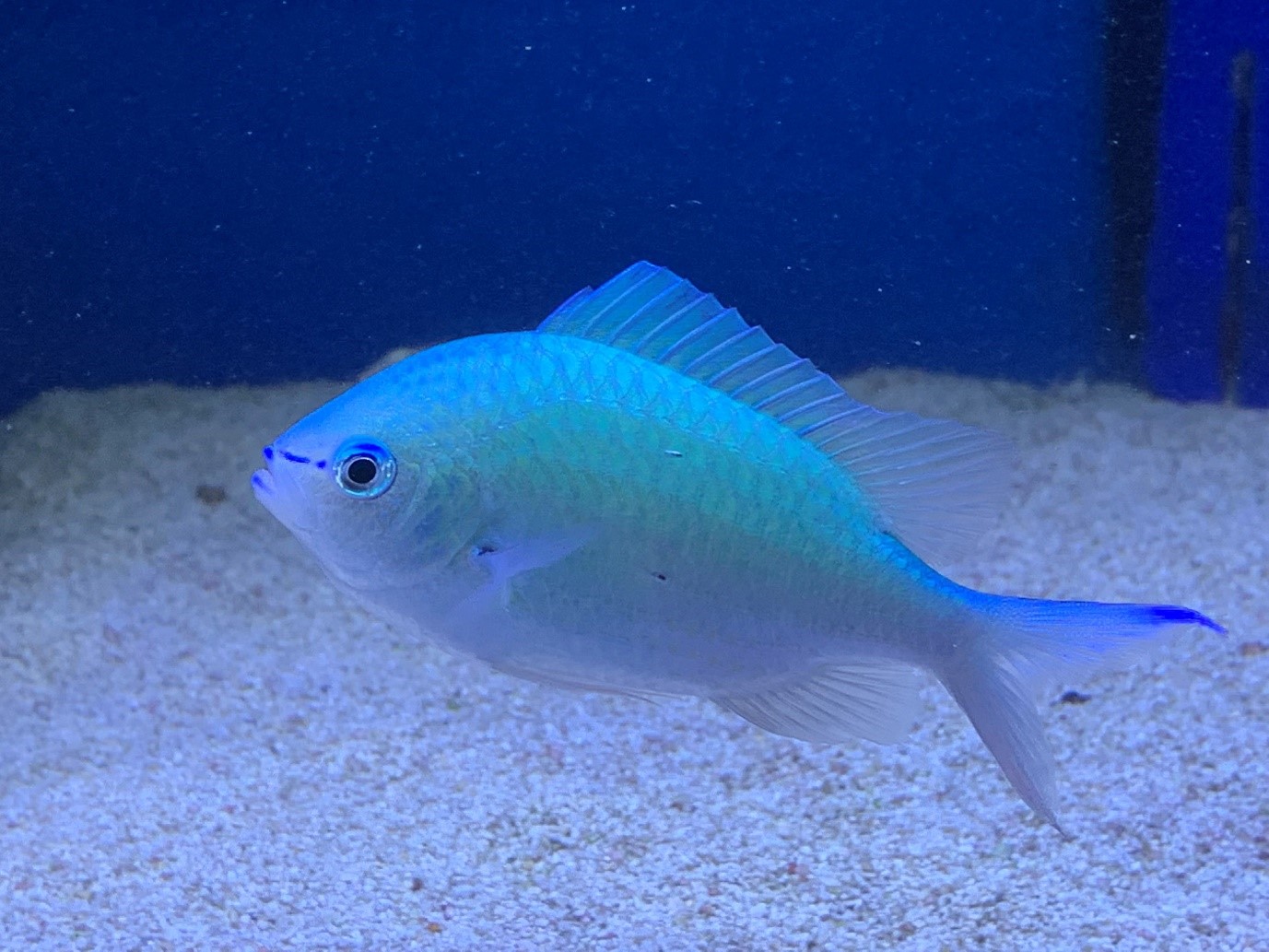
The colour keeps coming in our pond sections up and down the country, as the Primulas take centre stage. These denticulata come in a range of colours and thrive in moist soil in sun or light shade.
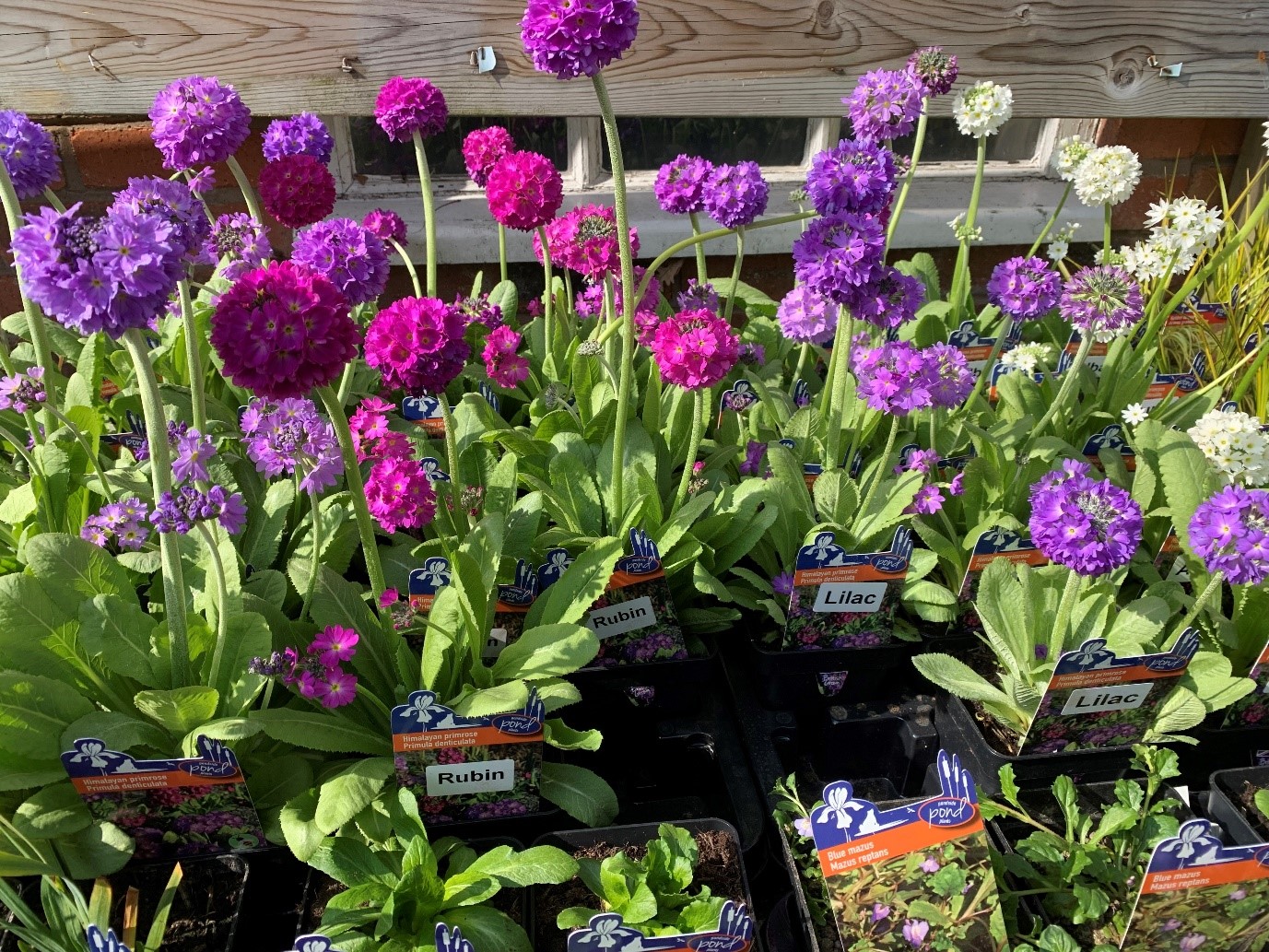
Corydoras catfishes really are the perfect community fish, and this is especially so in the case of the dwarf species which spend so much time swimming around in open water like tetras. The rarest of the group, these Corydoras hastatus were amongst many other tempting offerings at our Chester store.
https://www.fishkeeper.co.uk/help-and-advice/freshwater/catfish/dwarf-cory
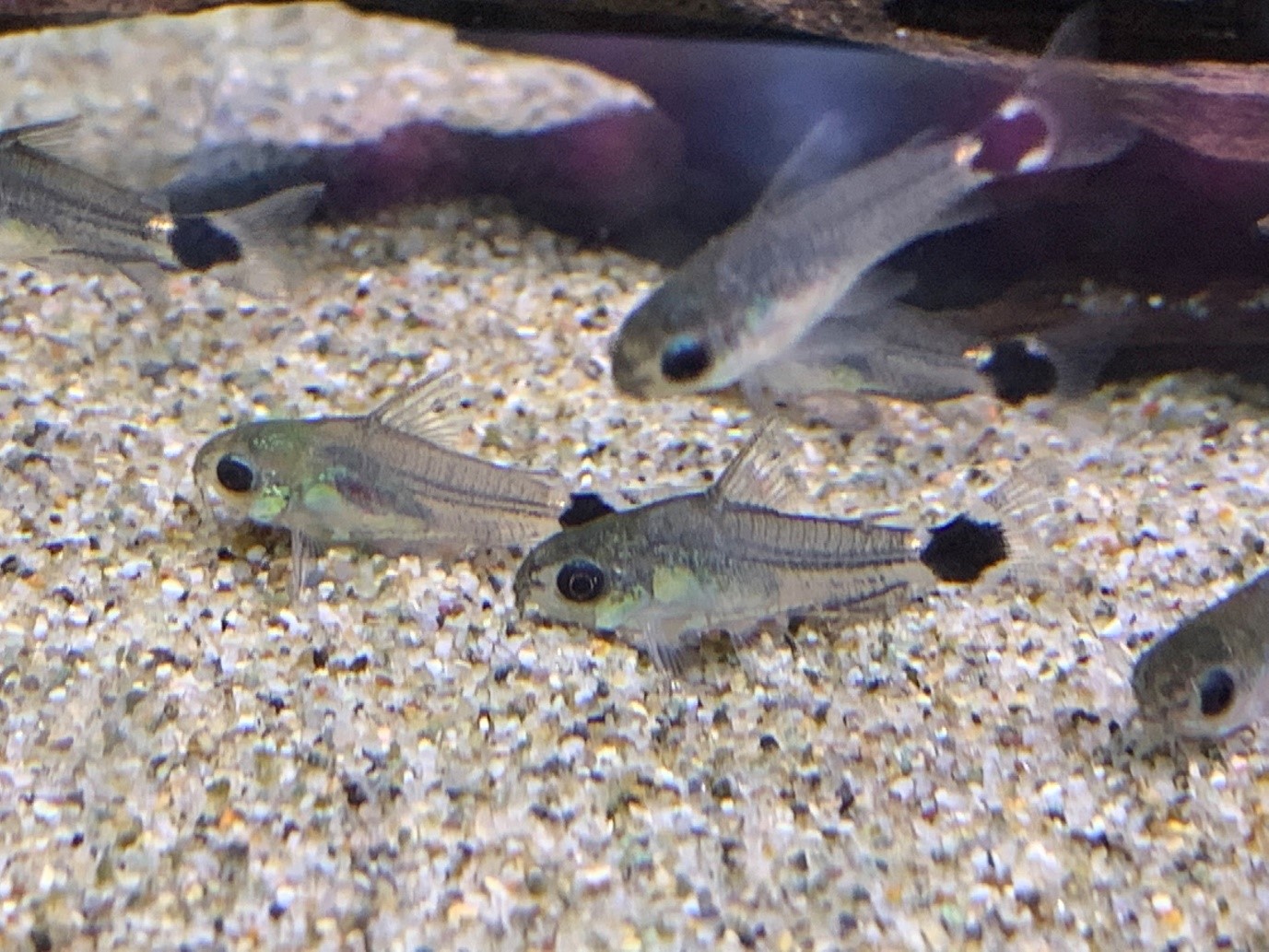
Spring may be a little reluctant to follow up on early promises, but the Koi (Cyprinus carpio) are ready to face the British weather in our stores right now. These young carp at our Bold Heath branch were keen to see if there was any food on offer.
https://www.fishkeeper.co.uk/help-and-advice/freshwater/pond-fish/koi/
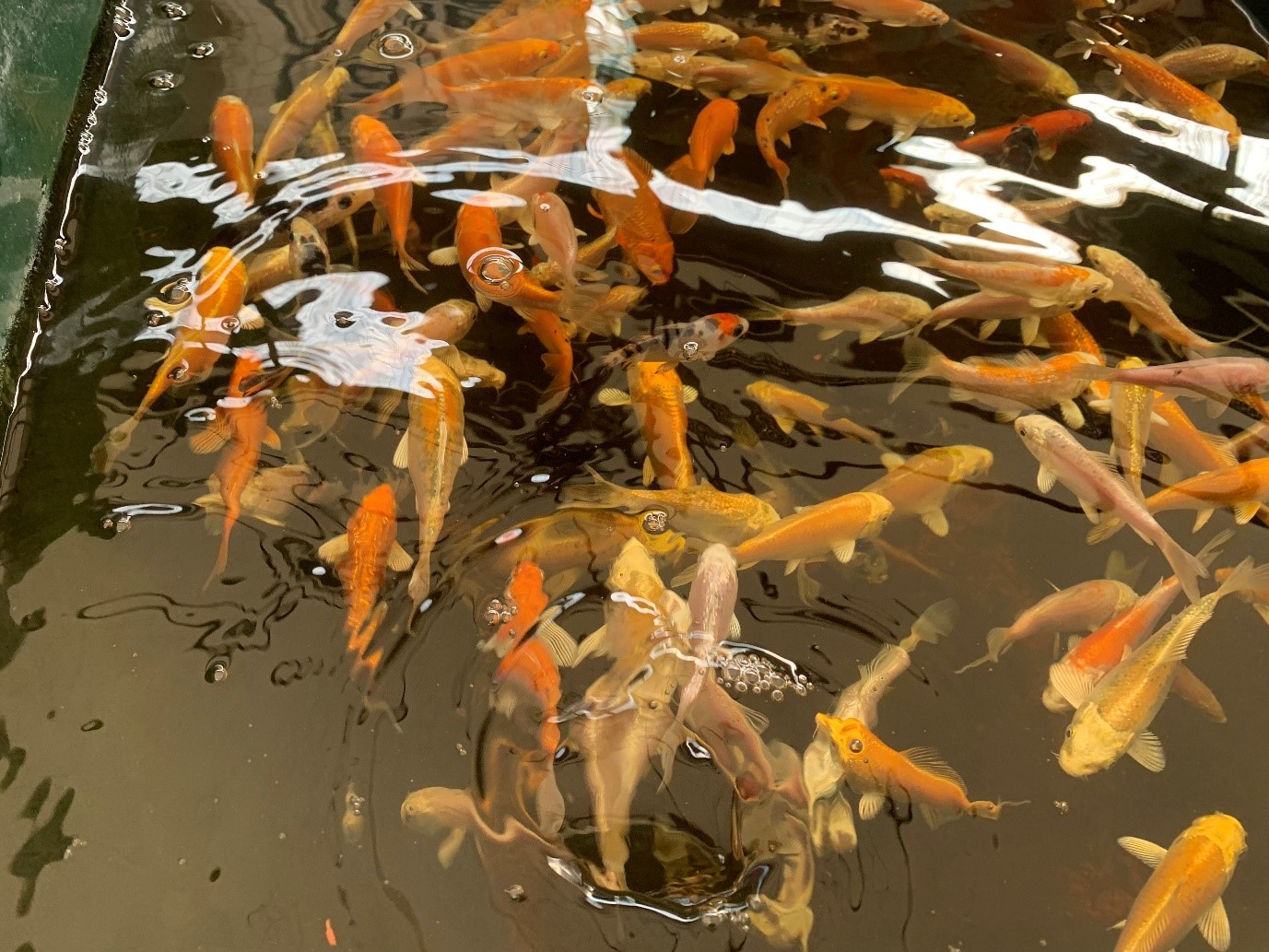
Piranhas are a far more diverse group than many people realise, as well as the voracious shoaling forms, there are solitary hunters and specialist fin and scale eaters like this Wimple piranha (Catoprion mento). A great oddball species for the dedicated keeper who doesn’t want an aquarium larger than the sofa, these fish grow to around 15cm and are pretty sociable with one another as juveniles, providing numbers are high enough to allow for normal interactions. Adults can be a little less tolerant but a large aquarium and plenty of cover should minimise friction. This fish was one of a batch seen at our York store.
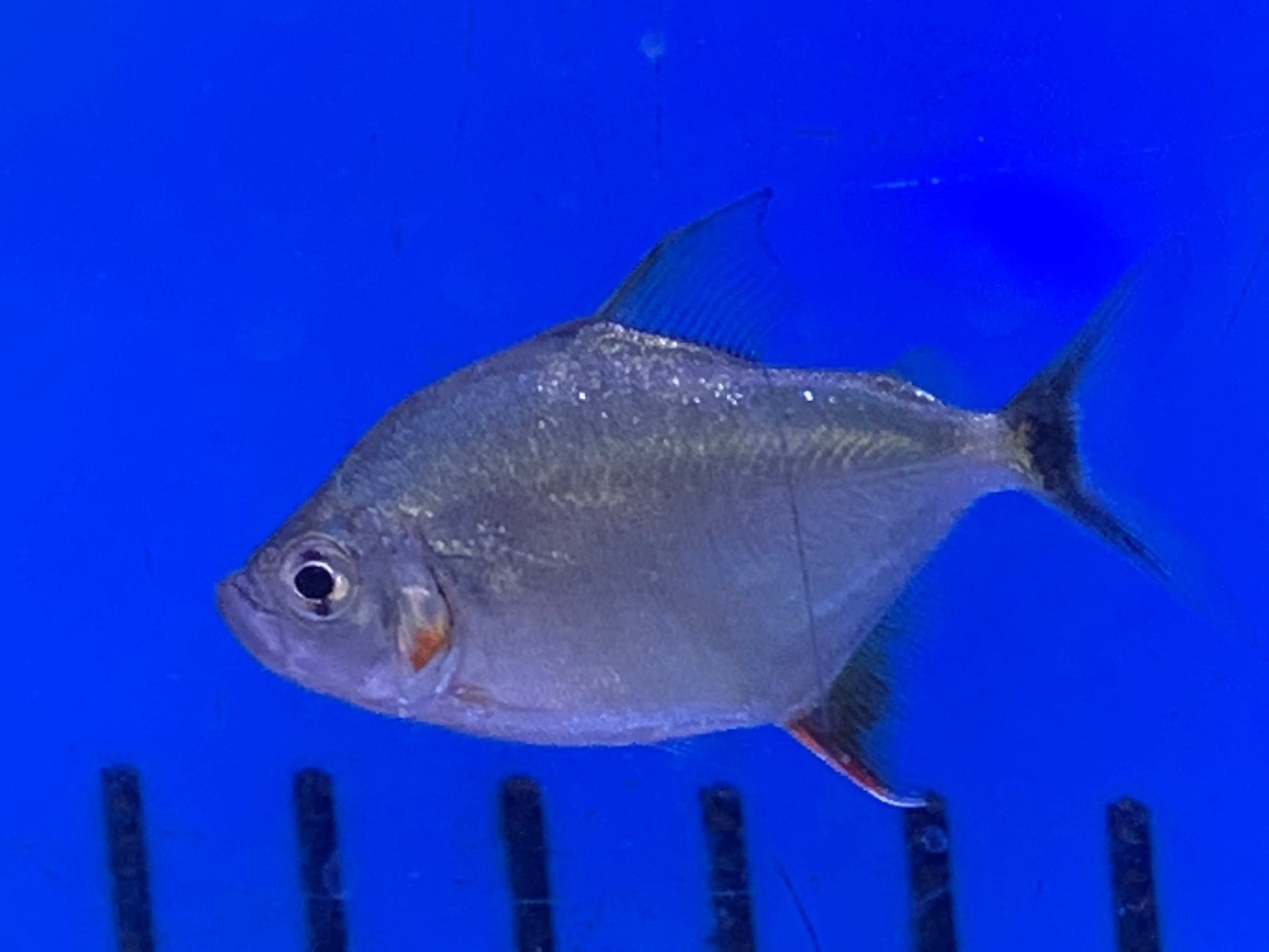
It's fair to say that the marine fishes in our stores draw a lot of attention with their vibrant colours and bold patterns. What’s not as obvious is the amount of personality some of these fishes have and if you were only to stock your home reef based on colour or the cast of Finding Nemo, you’d be missing out. One of the most charismatic groups of fish are the blennies and their muppet-like faces and engaging personalities make them firm favourites with anyone who’s shared their home with one. The Molly miller (Scartella cristata) comes to our stores as a captive bred fish with a reputation for eating noxious algae and even nuisance anemones. Their wide distribution and habitat preferences make them extremely adaptable and hardy, even before their head start as aquarium bred animals comes into play. This makes them perfect for a range of set ups and a great choice for beginners. This one came to the front of its tank to check out the camera at our Beverley store.
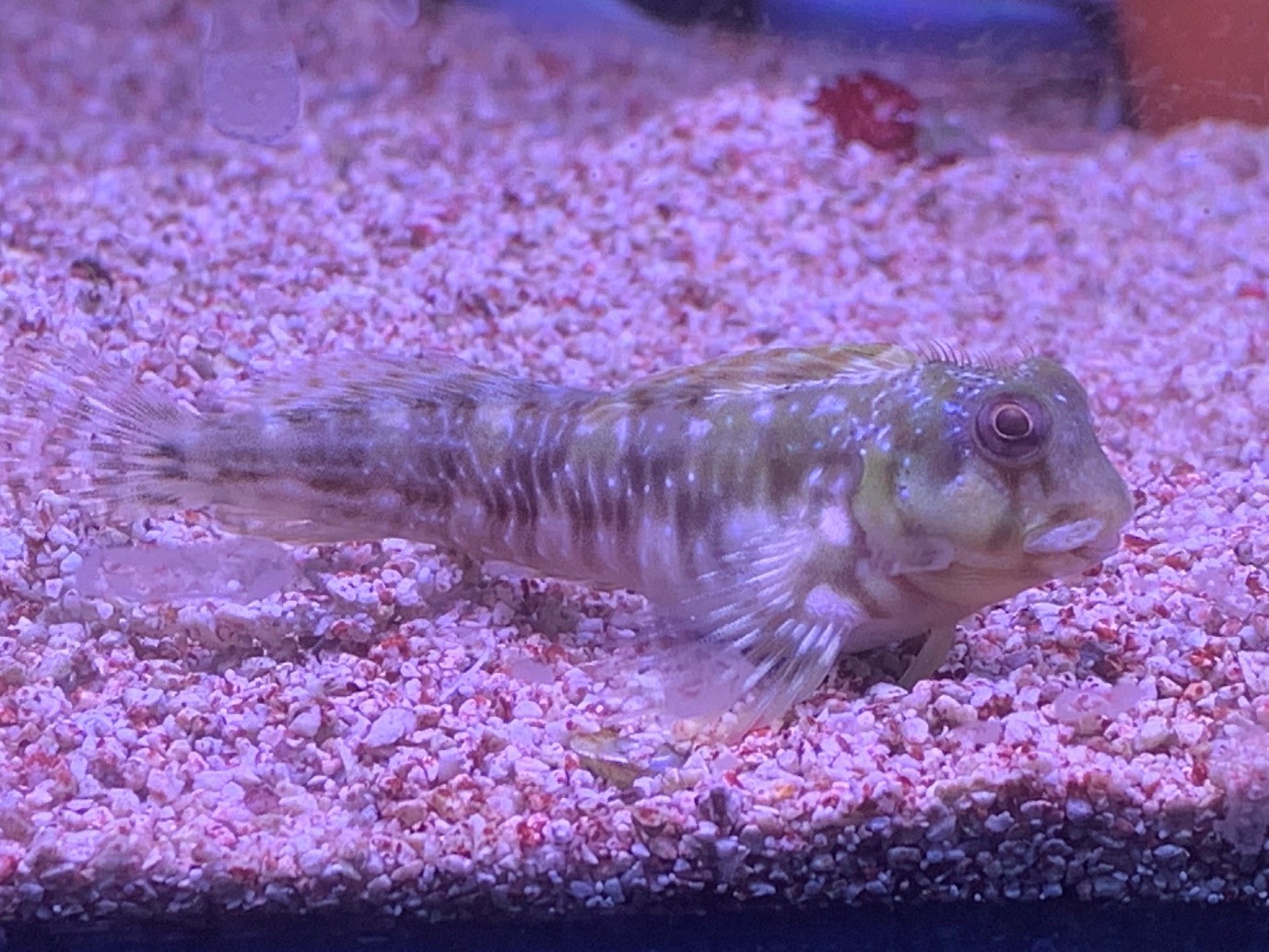
Telescope-eyed goldfish (Carassius auratus) are most familiar to us as Black moors, but these ‘dragon eye’ goldfish can come in most of the colours seen in any of the fancy goldfish forms, having been first bred around 300 years ago. This Red telescope bears a passing resemblance to a well-known Star Wars character and when it comes to choosing a child’s pet for a small aquarium, it definitely is a trap – these big, messy fish deserve large aquaria with big filters and good water quality. They’re much more work than many tropical fish but make great pets when properly kept. This one was amongst the fancy offerings at our Swansea store.
https://www.fishkeeper.co.uk/help-and-advice/freshwater/coldwater-aquarium-fish/telescope/
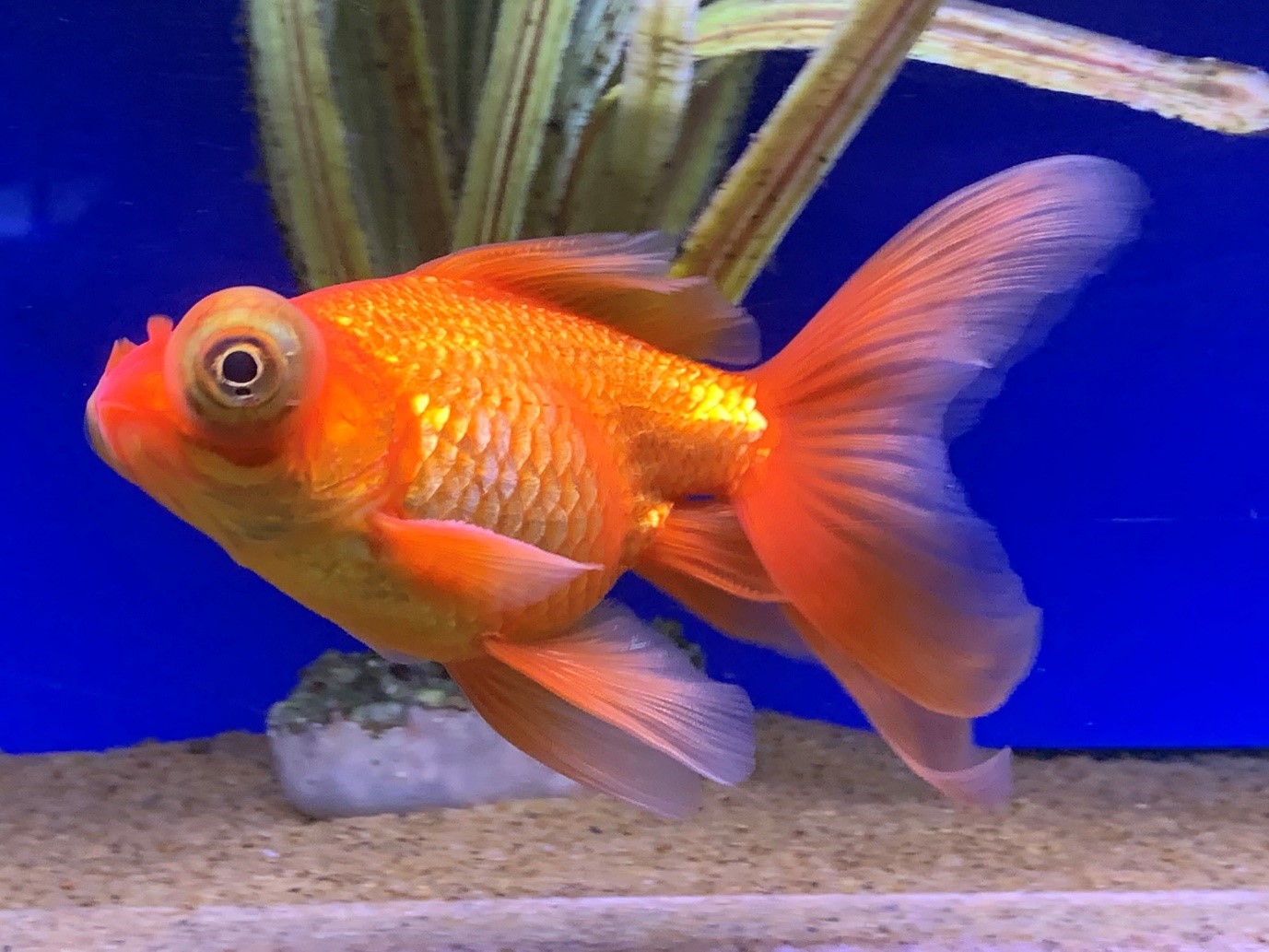
Many of the L number plecs are black with white spots and hide a lot, waiting for nightfall or the incentive of frozen food to lure them out, so that their good looks can be appreciated. It’s refreshing to be able to sing the praises of a more outgoing member of the family and the L075 Para plec (Peckoltia sabaji) combines an active nature with good looks. Although this fish will munch on a bit of algae alongside a varied diet of pellets and frozen foods, it doesn’t appreciate the water conditions that cause the fastest growths and high nitrates and phosphates should be remedied before adding them to the aquarium. This gorgeous specimen was seen at our Woking store.
https://www.fishkeeper.co.uk/help-and-advice/freshwater/catfish/para-plec-l075
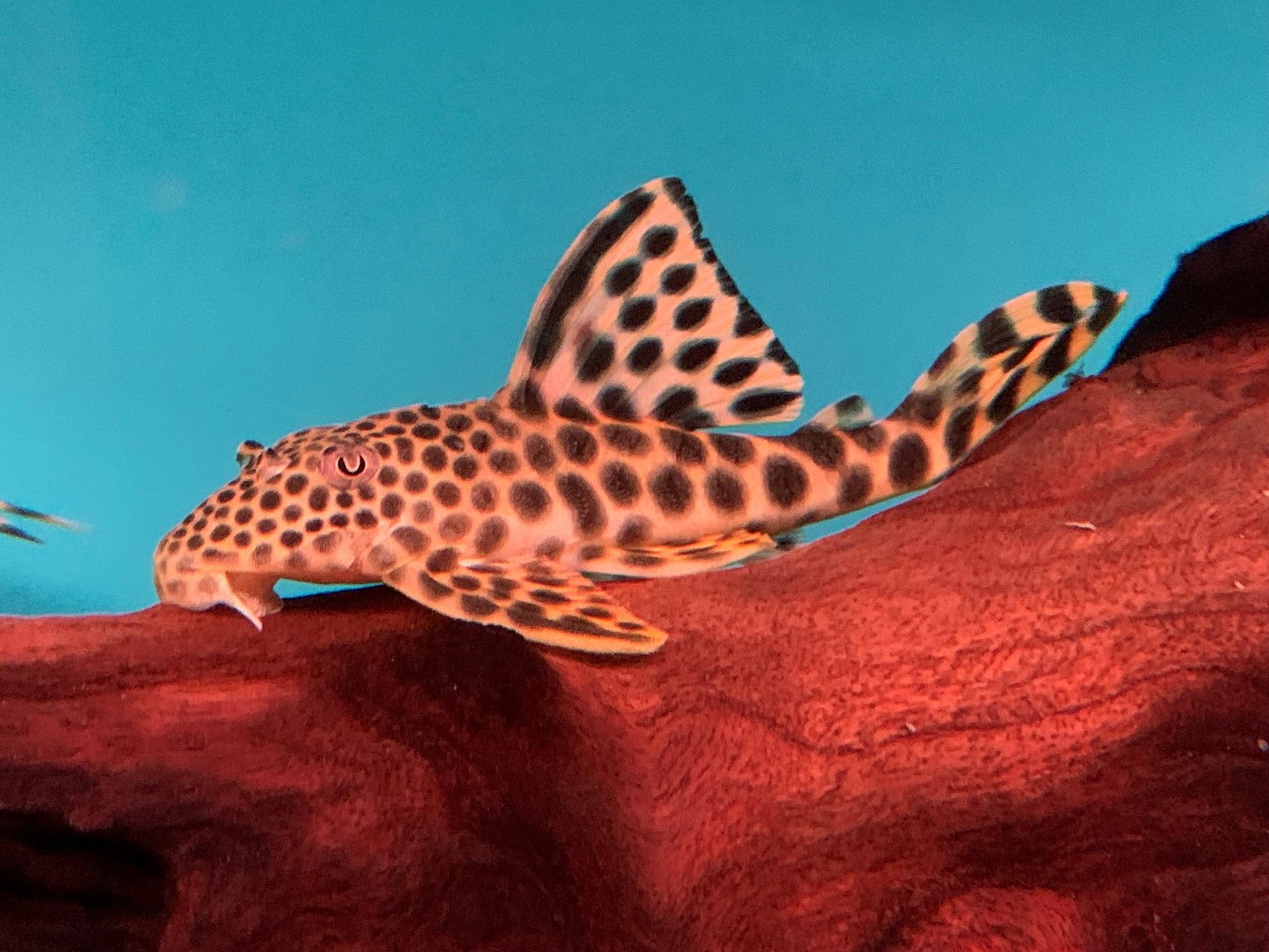
It’s generally the freshwater fishes which can be seen spawning in our stock tanks but this pair of Orange skunk clownfish (Amphiprion sandaracinos) at our Melksham store were happily tending a clutch of eggs. Less well known than some of their relatives (nobody ever shouts Nemo! at them) but they have all the charisma of their more popular cousins. Unlike ocellaris or percula clowns, these tank bred fish are generally identical to their wild ancestors and share their smaller adult size and more placid nature.
